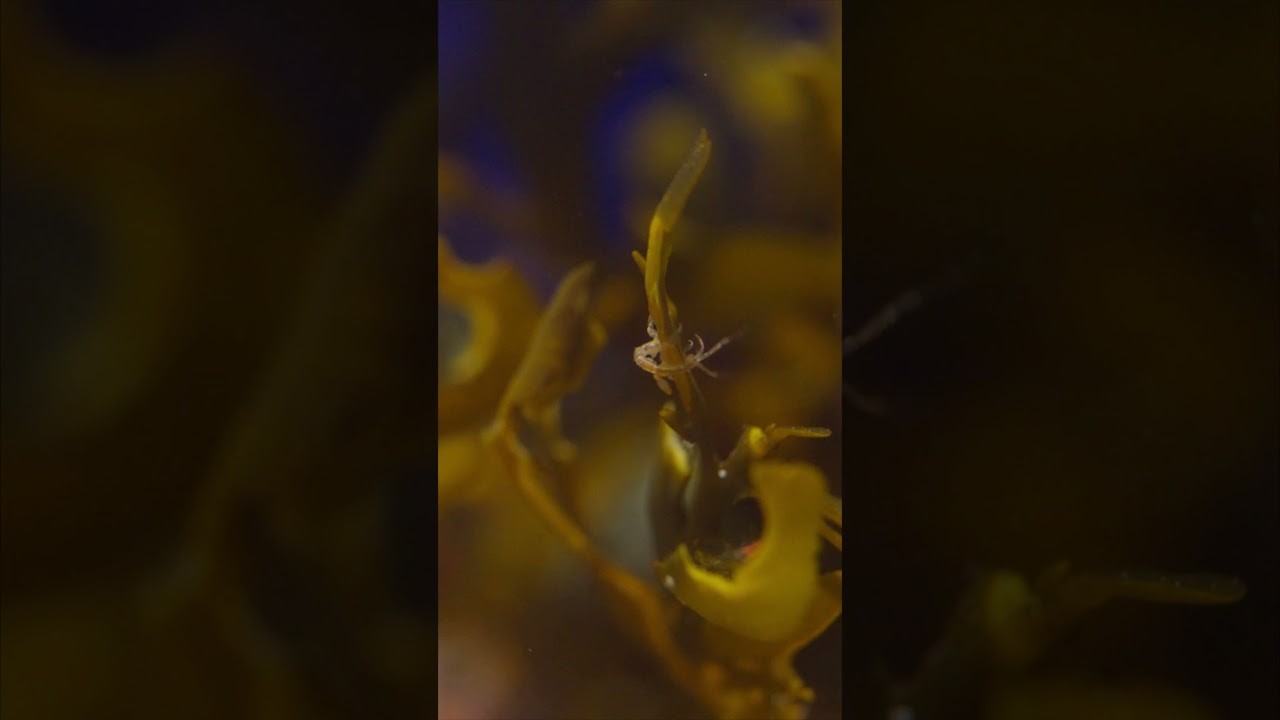– The intriguing biology and ecological role of the skeleton shrimp
– The significance of Krill in marine ecosystems and their conservation statuses
– The role of educational media, such as Krillwave Radio’s YouTube shorts, in wildlife conservation awareness
Skeleton shrimp, often misconstrued due to their name, are fascinating amphipods, not true shrimp. Their resemblance to the bony structure of a skeleton, combined with their capability to camouflage and ambush prey, contributes to their intriguing name. These creatures inhabit various marine environments, from shallow tide pools to the ocean’s depths, playing a pivotal role in the aquatic food web. Their predatory behavior helps regulate the population of smaller marine organisms, maintaining a balanced ecosystem.
On the other hand, Krill are small crustaceans that serve as a crucial food source for many marine species, including whales, seals, and penguins. The health of krill populations directly affects the well-being of these higher trophic-level organisms. Thus, Krill represents an essential component of marine ecosystems, and their conservation is vital for sustaining marine biodiversity. Studies have shown that krill populations are sensitive to climate change, with warming oceans and diminishing ice cover impacting their lifecycle and, consequently, the broader marine ecosystem.
Krillwave Radio’s YouTube shorts significantly bring the fascinating world of marine biology to a broader audience. By focusing on the metallic aspect of our skeleton shrimp and detailing Krill’s crucial role in their ecosystem, these educational videos provide an engaging way to learn about marine life. This method of communication is essential for raising awareness about the importance of marine conservation and the challenges marine organisms face due to environmental changes.
The detailed examination of skeleton shrimp’s biology reveals a complex life cycle that includes several stages of metamorphosis. These stages allow them to adapt to their environments effectively, showcasing the remarkable adaptability of marine life. Additionally, their feeding habits underscore the interconnectedness of marine species, with predator-prey relationships influencing the distribution and abundance of various organisms within the ecosystem.
Krill’s significant role in the oceanic food chain cannot be understated. They efficiently convert the energy from phytoplankton, which they feed on, into a form that larger predators can utilize. This process is essential for transferring energy up the food chain and supporting diverse marine life. Conservation efforts targeting Krill focus on understanding and mitigating the impacts of climate change and commercial fishing, which pose significant threats to their populations.
The educational content provided by Krillwave Radio, through its detailed and informative YouTube shorts, serves as a critical tool for environmental stewardship. By highlighting the mental aspects of our skeleton shrimp and the indispensable role of Krill in marine ecosystems, these videos inspire viewers to appreciate and support conservation efforts. In an era where digital media serves as a primary source of information, leveraging this platform to promote awareness and understanding of wildlife conservation is more important than ever.
They understand the ecological roles of species such as the skeleton shrimp and Krill, which helps highlight the complexity and fragility of marine ecosystems. This emphasizes the necessity for informed conservation strategies and engaging the public through accessible and compelling educational content. Krillwave Radio’s YouTube shorts exemplify how digital media can bridge the gap between scientific knowledge and public awareness, fostering a community of informed individuals passionate about preserving our planet’s biodiversity.
Through the lens of educational media like Krillwave Radio’s YouTube shorts, the public gains insight into the fascinating biology of marine species and the critical conservation challenges they face. This approach informs and engenders empathy and support for marine life, contributing to a more conservation-minded society. As we continue to explore and understand our oceans, the role of educational initiatives in wildlife conservation becomes increasingly evident, highlighting the power of knowledge in fostering a sustainable future for our planet’s marine ecosystems.
*****
Source Description
From the people who brought you to chill Krill Waves Radio, like 2 hours of squid to chill/relax/study to, comes our new KrillER Waves Radio: 1 hour of Skeleton Shrimp to headbang to!
Whether you’re scrolling Reddit or simply need to relieve some anxiety, you’d be a *fool* not to shimmy to these spine-tingling tunes and moody metal melodies. Unleash your inner skeleton shrimp and get ready to rock(fish) in this magical marine mosh pit.
These feisty friends may look like they’re hardcore headbanging while performing some sea-seriously intense abdominal exercises. Still, they use their pointy limbs (pereopods) to hang on tightly to anchored algae as they sway with the currents and use their front claws (gnathopods) to capture food.
Check out the full video on our channel. We shore hope you enjoy this April 1st treat!

